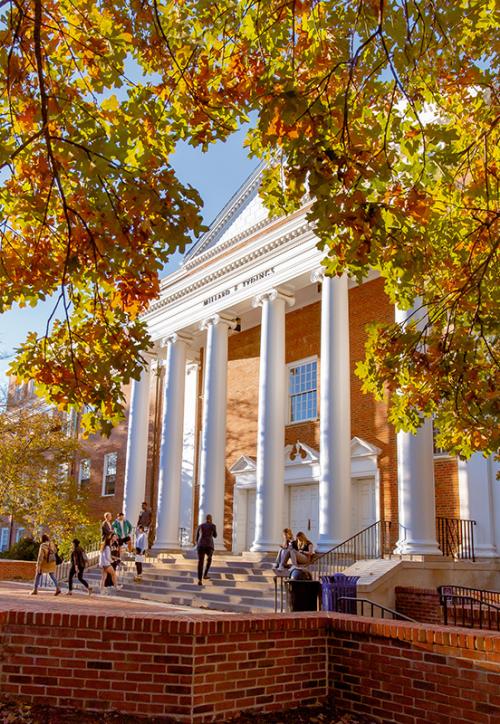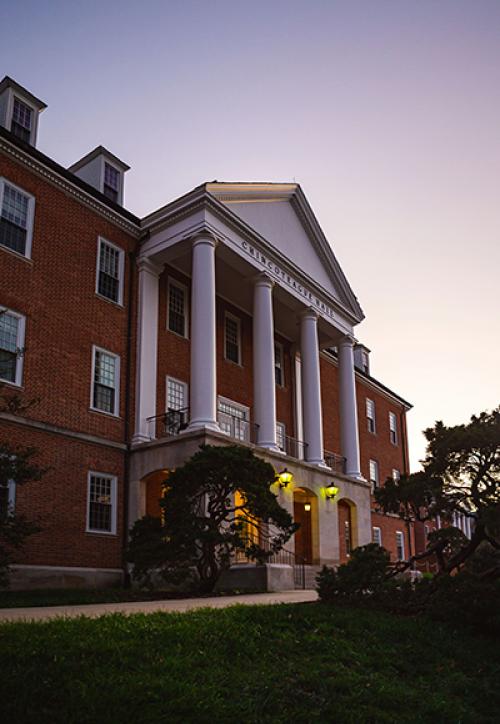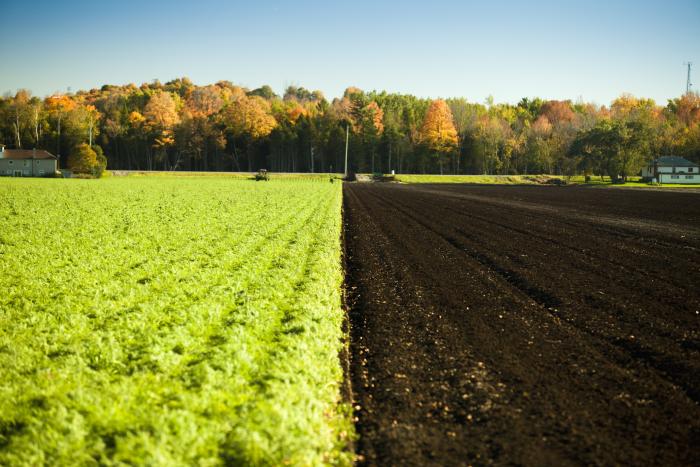UMD Researchers Create First System to Track Near-Real Time Changes to Global Land Cover
The DIST-ALERT system uses five satellites to receive more images of global land surfaces, more often
Scientists can now receive near-real-time alerts about the world’s lands as their surfaces change, thanks to a new satellite-based monitoring system described today in Nature Communications.
Known as the OPERA Land Surface Disturbance Alert (DIST-ALERT), the system is the first to globally track lands that are being changed by human activity, weather events, fires and other causes. Previously, only particular areas of the globe were being carefully monitored for changes to their land cover, like areas around the equator where rainforests are concentrated, and only for specific types of changes, like forest loss or fire.
DIST-ALERT also produces this information more quickly than other monitoring systems. Whereas most monitoring systems utilize imagery from one satellite system, DIST-ALERT obtains images from two systems, Landsat 8/9 and Sentinel-2A/B/C, that have five total satellites. Since it takes multiple days for a single satellite to return to an area to take a second image—a span of days described as a satellite's “revisit rate”—DIST-ALERT’s use of five satellites shortens its revisit rate to 1-4 days, giving scientists access to information in a shorter time frame.
“These satellites are affected by cloud cover, and if we don’t see the ground, we don’t know whether disturbances have happened. So with more observations we get more opportunities to get a cloud-free observation, and each observation can matter so much, particularly in cloudy areas,” explains Amy Pickens, an assistant research professor in the University of Maryland’s Department of Geographical Sciences (GEOG).
Pickens is the first author of the Nature Communications paper, which also includes new findings, using DIST-ALERT data, on how much land around the world changed in 2023 compared to 2020, 2021 and 2022.
Looking at how lands changed compared to the same month in the previous three years, the researchers found that the largest share of land change in 2023 was caused by natural climatic variations resulting either in plants dying back from extra hot or dry conditions, or more plant cover from extra rainfall.
The second-largest driver of land surface changes was shifts in human-led management, primarily actions like planting a different kind of crop or harvesting at different times.
Accounting for all the ways that humans might convert land surfaces—plant new farms, cut down forests, add new buildings, etc.—the researchers found that the sum of human-led land conversion in 2023 totaled 28.6±7.6 Mha, which is greater than the area of Ecuador or Colorado. Half of that converted land was long-lived forests, shrublands, grasslands, or wetlands.
“The conversion of natural lands to land use is a significant contributor to climate warming,” said GEOG Professor Matthew Hansen, one of the paper’s coauthors. “The result is increasing anomalous weather at the global scale, often seen in our data as large-scale vegetation loss due to fire, drought, floods, and windthrow events.”
DIST-ALERT data can be accessed by the public via the Land Processes Distributed Active Archive Center. Some organizations are adding DIST-ALERT data to existing systems that send out email, text message or mobile app notifications about land changes that are of interest to their audiences. Global Forest Watch—which offers the latest data, technology and tools that empower people everywhere to better protect forests—used to only be able to provide users with alerts about changes to tropical forests, but now provides updates for users concerning changes to all kinds of forests.
“There are a lot of aspirations to protect land and a lot of need to manage land, to make sure it is being used in the most valuable ways. But you can’t do that unless you have data about what’s going on,” says Pickens. “DIST-ALERT monitoring in such a low latency mode enables that data to be more actionable; not just for policymaking, but for actually responding to individual events.”
Other paper coauthors include fellow GEOG researchers Assistant Research Professor Zhen Song, Faculty Specialist Andrew Poulson, Assistant Research Professor Anna Komarova, Faculty Specialist Antoine Baggett, Faculty Specialist Theodore Kerr, Research Graduate Assistant Aleksandra Mikus, Faculty Specialist Carolina Ortiz Dominguez, Associate Research Professor Alexandra Tyukavina, and Assistant Research Professor André Lima.
Read “Rapid monitoring of global land change”
Photo is by iStock
Published on Wed, Oct 8, 2025 - 9:35AM




